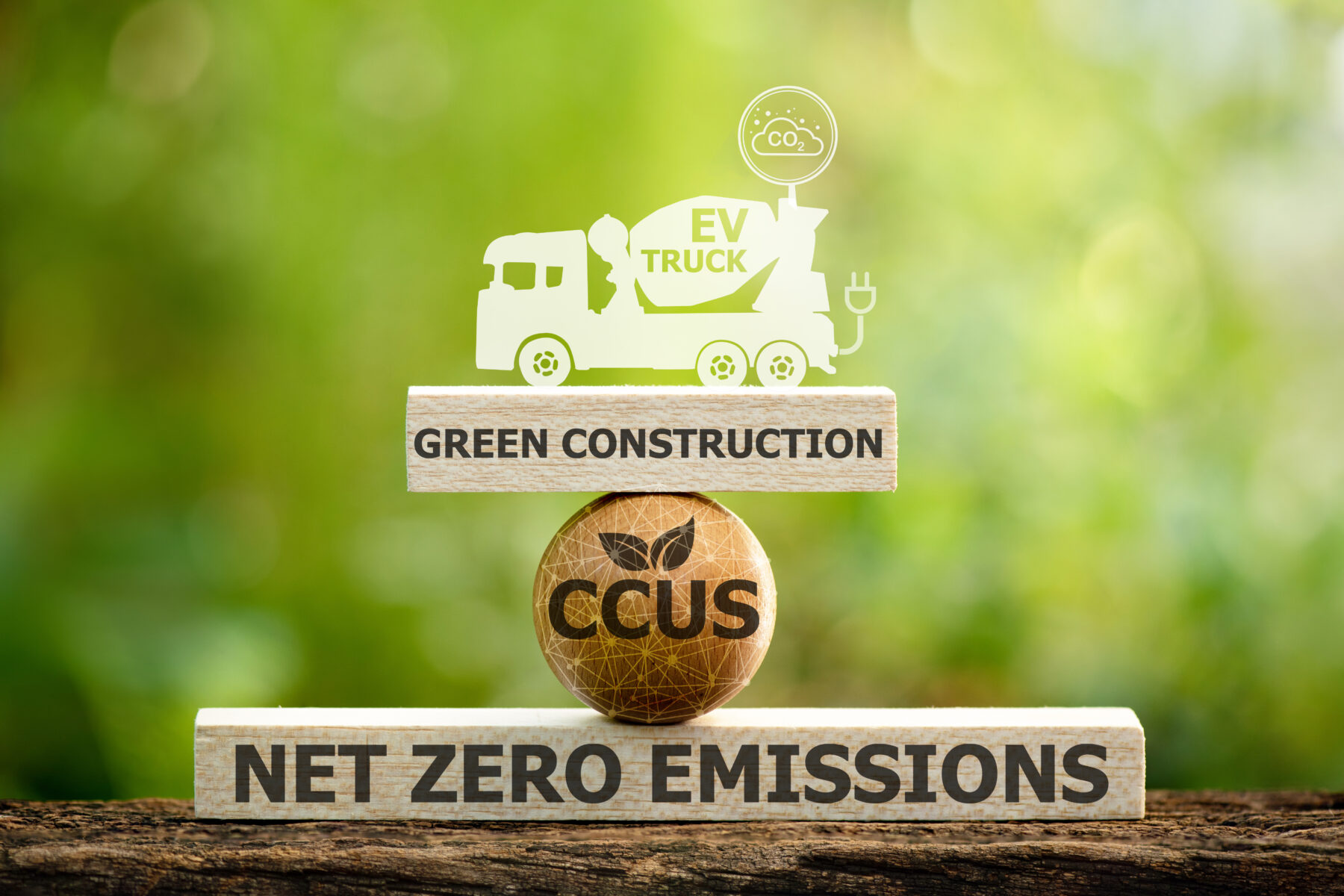Sustainability: The Road to Net-Zero Carbon Concrete
April 9, 2024

There’s an immediate global call to slash carbon emissions, with the concrete industry taking a significant role. Visible in virtually every built environment, concrete’s production isn’t free from the burdens of carbon emissions, marking a considerable impact on sustainability. However, a promising solution is emerging: net-zero carbon concrete. This new type of concrete offers a way to build sustainably, without compromising on durability. This shift signals a major step towards a net-zero global economy, representing a commitment to eco-friendly practices. Offering a chance to build a better future.
Concrete’s Carbon Challenge
The production of concrete packs a heavy carbon punch. This commonly used building material is renowned for its versatility, but the flip side shows a significant environmental concern. Unknown to many, the production process of concrete, notably the cement component, is a considerable contributor to global carbon emissions.
As the element that binds concrete, cement’s production process requires high heat, typically produced by burning fossil fuel. This process, known as calcination, releases carbon dioxide (CO2) into the atmosphere, contributing to global CO2 emissions, making the cement industry one of many that add to this global number.
The reality is, development doesn’t happen without this material and with urban development and population growth, the demand for concrete products continues to climb. Consequently, the carbon footprint from concrete production threatens to follow the same upward trajectory unless significant changes are made in how the material is made.
Overcoming Obstacles
Achieving net-zero carbon concrete is a journey filled with several obstacles. The first challenge lies in innovating technology and materials. As a search takes place for low-carbon cement options, we need new processes, solutions, and materials that are reliable and cost-effective. This might mean significant changes to current cement production methods, which also implies examining related sectors such as steel manufacturing.
Another challenge is the financial aspect. The expenses involved in researching, developing, and deploying new technologies are usually steep, particularly during the initial phases. It’s crucial that not only the technologies advance, but also the business frameworks and financial strategies that back these innovations.
Regulatory issues are another significant obstacle to overcome. The current regulatory landscape doesn’t always align with the urgency to tackle climate change. New regulations promoting green innovation and discouraging high carbon practices may need to be implemented. However, these should not dampen the enthusiasm of industry players who need to work hand in hand with policymakers to make meaningful progress.
Innovative Pathways
Rethinking our approach to concrete production, we’re observing a rise in innovative materials. Just like the changes seen in steel manufacturing, concrete is also evolving with the use of alternatives like fly ash, slag, and calcined clay. Using these in place of traditional cement not only reduces carbon output but also contributes to sustainability.
There are materials available that can improve the strength of concrete and reduce carbon emissions at the same time. One is fly ash, a residue from coal power plants, and another is slag, which is waste from steel manufacturing. Another material, calcined clay, acts as a kinder alternative to limestone. Limestone causes high amounts of CO2 to be released into the atmosphere when it is heated to create cement.
Parallel to material evolution, manufacturing efficiency is making substantial strides through the integration of renewable energy. The electrification of kilns, which are used in the heating process of making cement, is a promising approach. By using electricity generated from renewable sources, these kilns can function with significantly lower carbon emissions.
Additionally, the advent of carbon-capture technology in the industrial sector has given rise to a new wave of possibilities. This technology can capture and store CO2 emissions from the manufacturing process, reducing the carbon output of the industry.
Moreover, initiatives like Concrete Action for Climate are guiding the sector towards a greener future by encouraging partnership and change through collective efforts. The path to net-zero concrete, although daunting, remains a focused pursuit marked by resourceful thinking, resolve, and an unwavering dedication to environmental sustainability.
Policy and Industry Momentum
Strong policies can encourage and reward efforts to develop greener concrete technologies. Through intelligent legislation, governments can guide industry towards innovative low carbon solutions, offering financial and other incentives.
Collaborative efforts, like the Concrete Action for Climate, show the power of group influence. Using joint buying power, these groups stir changes in worldwide markets, investment, and policies. They push for a move towards sustainably sourced and produced concrete, quickening the rate of change.
Standards are crucial for promoting sustainable innovation. The move towards the ASTM C1157 standard promotes competition and encourages development of carbon-neutral cement. This effort aligns with the industry’s ambitious goal to transition to net-zero carbon concrete by 2050.
What’s more, industry stakeholders are addressing key research and action priorities. Among these, the rethinking of steel manufacturing processes and advancements in carbon capture and storage for cement are gaining prominence.
The Future of Construction
Considering the future, sustainability is not merely an option but an essential requirement. This stems from the fact that sustainable construction plays a pivotal role in addressing the critical global issue of reducing emissions.
Where dollars are spent matters, which means that collective buying decisions can significantly impact the environment. When society demands sustainable materials such as zero-carbon concrete, it sends a compelling message. This message encourages the adoption of greener practices in manufacturing processes.
Technological innovation also serves as a key catalyst for change, transforming the future of construction with sustainable concrete. Essentially, concrete should be strong and long-lasting, but also carbon-neutral, finding a balance between practicality and eco-friendliness.
The urgency of the climate crisis requires sustainable construction now, not just in the future. The need for greener materials represents a significant shift, not merely a trend. And technological innovation isn’t a dream – it’s a tangible solution.
As the countdown to net-zero intensifies, the message is clear: construction will find itself as a leader in sustainability. The pivot towards sustainable construction processes signals a need for repricing, reinvesting, and revising policies. It serves as a reminder that the path to halving carbon emissions by 2030, and keeping global temperatures in check, travels through mortar and brick – through the gritty business of creating net-zero carbon concrete.

